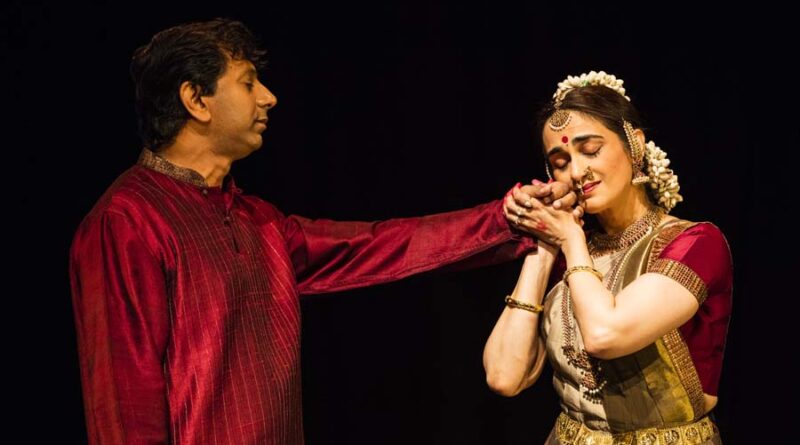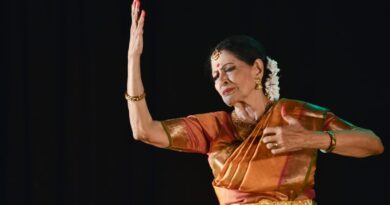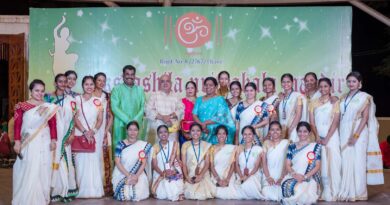Navadisha – 2016
SUNIL KOTHARI
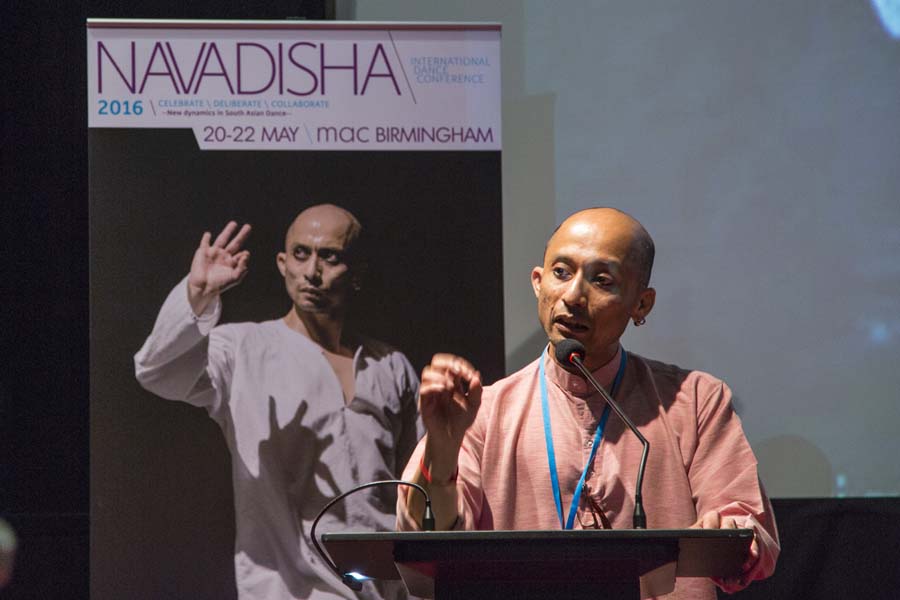
BIRMINGHAM:Navadisha 2016 dance conference was a unique event, the likes of which has not been organised in the UK in recent times. The last Navadisha event was organised by Piali Roy, director of Sampadorganisation in 2000. After an interval of 15 years, Anita Srivastava, director of New Dimension Arts Management and the producer of this event along with co-producer Piali Roy and ChitraSundaram, moderator, art consultant and Bharatanatyam dancer brainstormed for the past two years and worked out this mind-boggling conference enlisting support of many funding organisations and sponsors and various dance institutions across the UK. They invited dancers, scholars, organisers, academicians, not only of the Indian Diaspora but also equal partners in the creative industry of dance, British organisers, British South Asian dancers, choreographers, event managers and a host of UK-based dancers.
From Canada, LataPada of Sampradaya, Hari Krishnan dancer, choreographer, academician, of InDance company, Nova Bhattacharya, Bharatanatyam and contemporary dancer and president of the Toronto Arts Council’s Board of Directors; from Johannesburg, South Africa, JayesperiMoopen, Bharatanatyam dancer and choreographer, and artistic director of Tribangi Dance Theatre; from Singapore,AravinthKumarasamy, dancer, choreographer, creative and managing director of Apsara Arts; from Dubai,Pali Chandra, Kathak dancer, choreographer and director of Gurukul – Dubai; From India – Kolkata contemporary dancer and choreographer Tanusree Shankar, Kathak dancer, choreographer VikramIyengar; from Chennai contemporary dancer, choreographer, writer, editor of e-portal Narthaki.com and director of Arangham Trust, Anita Ratnam; from Hyderabad dancer, choreographer Ananda Shankar Jayant; from Delhi dance critic Sunil Kothari; from Mumbai Kathak dancer, choreographer, and also resident artist South Bank Centre, London, Gauri Sharma Tripathi; and from Ahmedabad Chirag Mehta, producer Ice Craft Creations Pvt. Ltd. were present at the conference.
The list of the participants from across the UK is too long to mention here. The supportive and important British participants were Kenneth Tharp, chief executive of The Place; chief executive and artistic director of Sadler’s Wells Alistair Spalding; Nadine Patel of British Council; Paul Russ, artistic director of Dane 4; and from Nehru Centre deputy director VibhaMehdiretta.Others included Morag Deyes artistic director and mentor of Dance Base from Edinburgh, Jen Hackett artistic director and producer of Sadler’s Wells, Professor and head of dance department Roehampton University Ann David, Julia Carruthersprogramme director Warwick Arts Centre, Clair Farmer DanceWell Consultant of Akademi; Andrew Hurst, chief executive of One Dance UK. The participation of the British heads of different organisation showed the close interaction with institutions interested in South Asian dance forms.
I have named these participants to give an idea of the range and for their seminal contribution to the various sessions of the three-day conference. The topics formed two parts of discussions: the performer’s perspective and the perspectives of founder, promoter and programmer; A vision for Outdoor Arts-from Temple to Trafalgar Square curated by Mira Kaushik, director of Akademi; Opportunities in Mela, by Ajay Chhabra, director of Nutkhat; Beyond Boundaries by Magdalene Gorringe, Politics of dance in Outdoor Arts by AvanthiMeduri; and issues of Barriers, Resistance and Solutions were also dealt with.
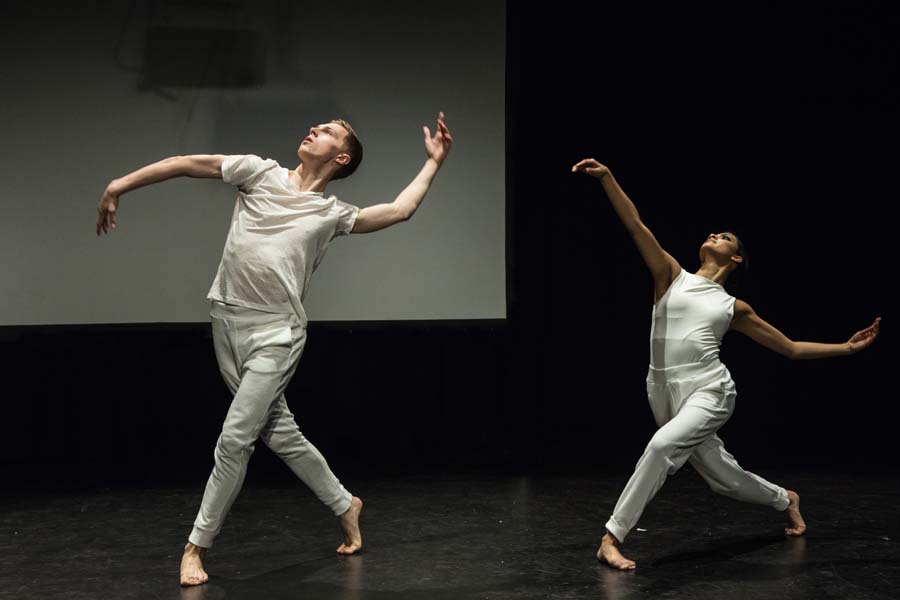
The organizers were fortunate in getting three most celebrated internationally renowned dancers/choreographers from London Akram Khan, ShobanaJeyasingh, and MavinKhoo, to deliver keynote addresses on each of the three days.
Akram Khan read out his keynote address emphasising on the preservation of classical dance forms. Trained in classical Kathak under PratapPawar, Akram Khan has extended the boundaries of Kathak with his studies of contemporary dance and has produced during past thirty years outstanding choreographic works in collaboration with celebrated creative artist’s sculptor AnishKapoor, musician NitinSawhney, French ballerina Juliette Binoche, Sylvie Guillem, Israel Galan, and SidiLarbiCherkaoui. He also insists that it is necessary for Indian dance to evolve and transform. While appreciating the popularity of dance among South Asian audiences, he lamented that none of the rich South Asians barons are patrons of performing arts. He is also keen for Asian audiences to engage further in the arts. Many of those who go to his shows are white people with exceptions of a few from other backgrounds. He wished he could spend more time with artistes who had come for the conference from all over UK and also from abroad, but his busy schedule kept him and he had to leave soon after his keynote address.
ShobanaJeysingh has the credit of being the first Indian Diaspora to have created history in the UK making the most successful transition from classical traditional dance form like Bharatanatyam to contemporary dance with her own company, thirty years ago. She spoke about Rukmini Devi, her vision, revival and preservation of forms like Bharatanatyam, and how it was protected from vulgarity and commercialism and highlighting spirituality. She mentioned that we must respect history. She spoke of the need for dance to reflect contemporary realities and not seeing classical and contemporary as two binaries but as complementary arts. She emphasised the need for knowing what is going on underground below the carefully manicured garden in order to grow. Dance must have a personal signature and also generate new material and have strength of character.
Sadly, I could not attend MavinKhoo’s keynote address on account of another commitment.
One of the fascinating presentations was by Mira Kaushik, director of Akademi. Her outdoor presentations have created history among South Asian dancers as she galvanized dancers to perform in open-air sites on a grand scale, using public spaces, creating spectacles, the like of which were so far not attempted using classical Indian dance forms, by its practitioners in London.
Using the top surfaces of art galleries, buildings, various levels, choreographing them with a large number of dancers, she succeeded in bringing to the notice of the public the vibrancy of the classical dance forms, its diversity, variety and potential of popularity in a manner which was imaginative and bold. Mira also screened excerpts of some of those events at the conference, ranging from monuments, gardens, fountains, St James’ Palace, Westminster Parliament and also included a Bollywood film sequence of Umarao Jan.
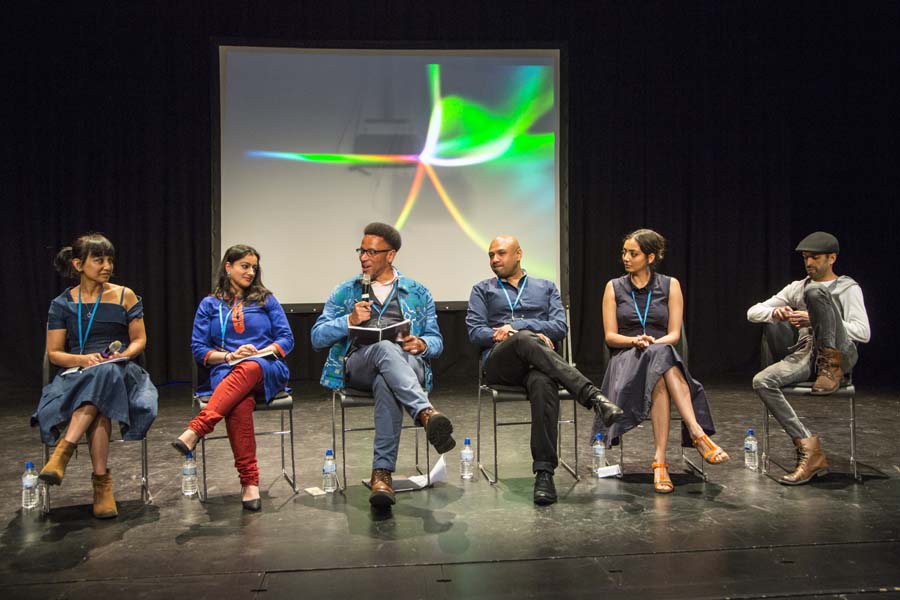
The opportunities in Mela, choreographing outdoor performances, the challenges, the different nature of audiences and their responses were discussed. The marketing aspect of such spectacles, the funding and sponsors and finally these spectacles turning into ticketed shows were quite an eye opener.
With sessions following each other and panelists discussing issues within a limited time, left very little time left for question and answer sessions. However, one was able to grasp the issues faced by the Indian Diaspora pursuing dance. Even though the term South Asian Arts is largely used for classical Indian dance forms, the art still faces problems in the UK. Infact, all immigrants face these problems. The Indian Diaspora world over has attempted to resolve them as best as they can.
The pattern is as follows. In order to improve the economic condition when immigrants come to another country, in order to maintain their identity, the roots of Indian culture are further deepened. Various cultural expressions are explored and sustained with greater enthusiasm. The Indian classical dance forms provide a substantial resource and a route to remain connected with the Indian culture. When a young woman, trained in one of the Indian classical dance forms, after marriage settles in another country and starts exploring opportunities of performing and in turn teaches people, what emerges is a clear attempt to maintain their own identity.
The rest is history as we have seen how classical Indian dance forms have been nurtured and technique is transmitted to young persons in the USA, Canada, UK, France and other countries. Over the past 40 years, where the Indian Diaspora has settled, the government with its policy for supporting multicultural communities has provided financial assistance.
To take a specific example of the UK, the scenario is interesting. The Arts Council provides financial grants to Indian dancers who have settled for a longer time and have established their institutions. There has also been an insistence on the part of Arts Council on growth and development of the classical forms and reflecting contemporary issues. That is a tricky issue, as not all dancers are able to toe the line of obtaining financial support.
The other source of training is institutions like BharatiyaVidyaBhavan, established earlier, also for performances and The Nehru Centre, who have helped dancers to develop and cultivate their audiences. Tara Rajkumar, a Kathakali and MohiniAttam dancer, had started with the help of BharatiyaVidyaBhavan, an institution Akademi to help dancers.
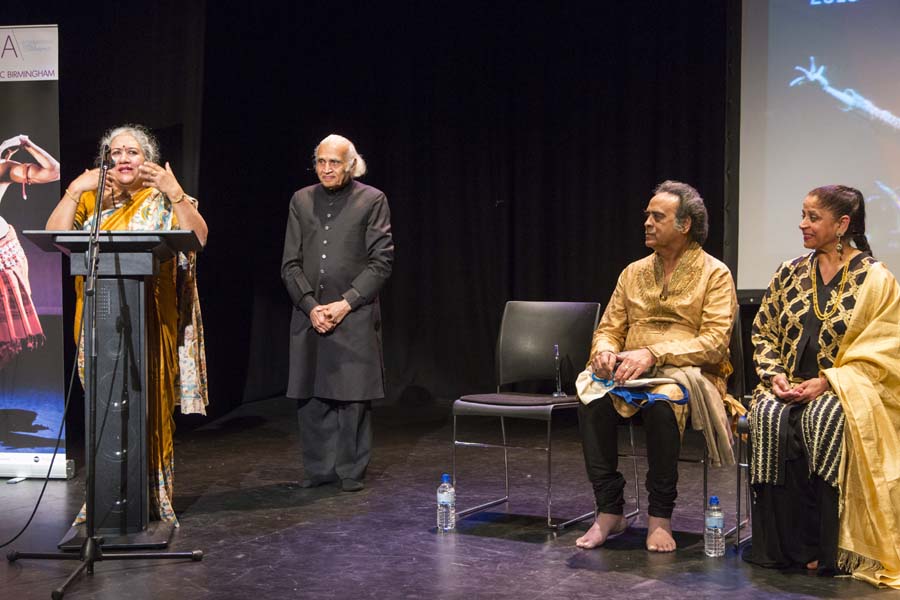
Akademi has grown over the years under the broad vision of Mira Kaushik as a strategic arts organisation, body of global importance reaching millions through its work. To expose British community to a wider variety of Indian dance forms, it has projected on a grand scale, site-specific performances like Coming of Age and Escapade at the Southbank Centre, Waterscapes at Somerset House. Mira’s exceptional work has earned her OBE for services to dance.
Sampad in Birmingham has taken a quantum leap in the promotion of Indian dance, under dedicated services of Piali Roy, regionally, nationally, and internationally. It allows audiences and communities to experience high-quality arts through performances, festivals, conferences and education and outreach work. In 2012, she was commissioned by the Cultural Olympiad and London 2012 Festival to produce two large-scale shows — Moving Earth and Mandala — which were widely recognised as flagship events for South Asian Arts in the UK. She was also conferred with Order of the British Empire (OBE) in 2012 and other awards for raising Indian Art and Culture Awareness in the UK in 2015.
Sujata Banerjee took the lead of establishing a curriculum for high standards in schools for Kathak and Bharatanatyam with Imperial Society of Teachers of Dancing (ISTD). This course has found acceptance world over including India. A trained sports scientist delivers performance enhancement workshops for dancers. Bharatanatyam dancers like ChitralekaBolar (Birmingham), Geetha Sridhar, who had worked with Chandralekha, and studied Dance training and Education from Kent University (London), RashmiSudhir, Yorkshire-based dancer specialising in Bharatanatyam, Kuchipudi and MohiniAttam and community dance (Bradford), ShanthaRao also from Yorkshire, with projects of training, Swati Raut, working in Lancaster, represented facets of exploring educational aspects and showed their engagement with dance in terms of national and regional training over the years.
The session on the significance of South Asian dance voice in academia saw seminal work done by AvanthiMeduri at the University of Roehampton and by PrarthanaPurkayasth at the Royal Holloway University of London and RoyonaMitra at Brunel University, London. She has also authored a book on Akram Khan: Dancing New Interculturalism.
In Bedfordshire SanjeeviniDutt, running a dance agency Kadam for past 20 years is now best known for publishing, the UK’s leading quarterly Pulse on South Asian Arts, dance, and music and as the producer of the cutting edge, high-quality dance and music works. She has made music also an integral part of the magazine. The print magazine runs in tandem with an on-line version. This development is most important for dissemination of news in the field of dance and music. She has also produced educational videos of a senior dancer, choreographer BisakhaSarker introducing dance to British schools. It was followed by Living tradition which traced the development of South Asian Arts in the UK.
An interesting development over the years has been of international collaborations. A session dedicated to this category showed how dancers with greater awareness and business acumen have expanded horizons. However, the conference addressed the challenges in this area throwing light on artistic collaborations across different countries. The contribution of leaders in such field like FarooqChaudhry has been most significant.
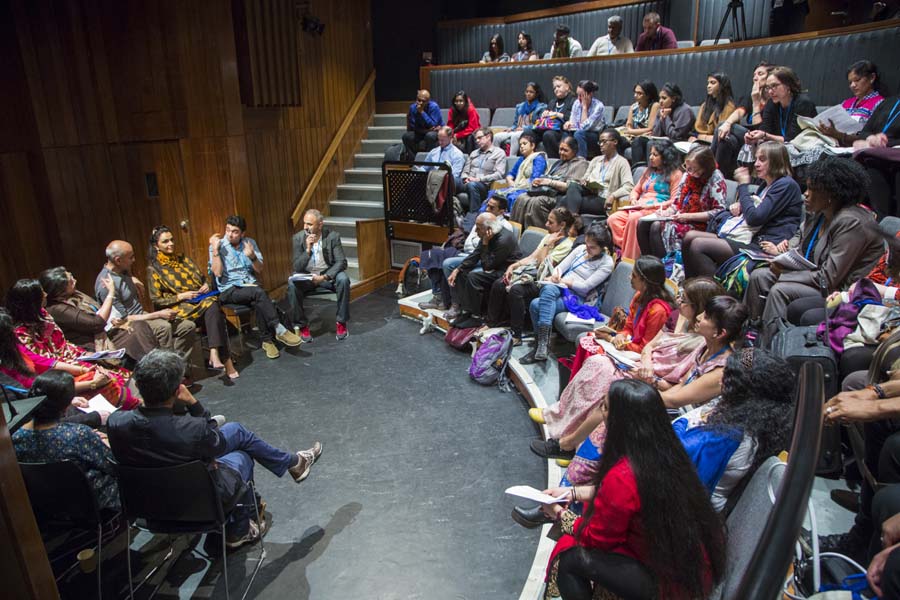
A session on ‘The Business of Dance’ by Anita Ratnam and FarooqChaudhry, a creative entrepreneur and producer, Akram Khan Dance Company, was significant as Farooq and Akram Khan created history with their collaboration. Anita Ratnam managed to draw out from Farooq various insights, struggles and relentless work over the past 30 years for their understanding of business. Farooq revealed that he has also foundbrilliant dancers in China and the constant travels and exposure have helped him in his success story. It is important to remember that Anita Ratnam had invited Akram Khan to perform in Chennai for The Other Festival.
On account of other commitments, I had to forego the discussions on the final day. The topics ranged from New Narratives to New audiences. Who are we dancing for? The first part covered the artist’s perspective and the second dealt with the venue, producer and promoter’s perspective. The afternoon sessions focused on topics like changing lives and inspiring stories – how dance is enhancing people’s lives. The participants were AravinthKumarasamy from Singapore, HardishVirk, Ananda Shankar Jayant, AnushaSubramanyam, BisakhaSarker, SanjiveeniDutt and others. A dance film titled Nu Body Dance by Sonia Sabri Company was screened.
The celebratory finale performances featured Sonia Sabri Company in Kathak, SoorajSubramaniam from Belgium in Odissi, Srishti-Nina Rajarani Dance creations in Bharatanatyam, Chitraleka Dance Company in MohiniAttam, Ankh Dance in Kathak, SujitVaidya in Bharatanatyam and Bolly Flex’s Bollywood.
The conference coincided with the International Dance Festival of Birmingham showcasing classical Odissi by Guru KelucharanMahapatra’s daughter-in-law Sujata and granddaughter PreetishaMahapatra and in Bharatanatyam the dancing couple SrijithNambiar and ParvatiMenon, AakashOdedra and SanjuktaSinha, HembharathyPalani and SubhashViman. There was also an inevitable Desi Grooves party with colourful Bollywood dance and Bhangra.
The most touching ceremonies were of honouringNaseem Khan, PushkalaGopal, PratapPawar and NahidSiddiqui for their lifelong work in the field of dance.
Naseem Khan, daughter of Indian and German immigrants, has been at the forefront of Britain’s cultural change as a commentator, policy developer and initiator for over thirty years. Her groundbreaking report —The Arts Britain Ignores — was the first to highlight the cultural work of ethnic minority communities. She followed it up with a substantial body of work in diversity policy in organisations like Council of Europe, UNESCO, Museums and Art Galleries Commission, Asia-Europe Foundation and Arts Council of England.
Both as an independent and staff journalist, she has written regularly for The Guardian, Independent and New Statesman. As head of Diversity for Arts Council of England, her seminal contribution has helped South Asian Arts immensely. For her services, Navadisha 2016 honoured her. It was 40 years since her report drew attention to cultural work of ethnic minorities that the present conference took stock of various developments.
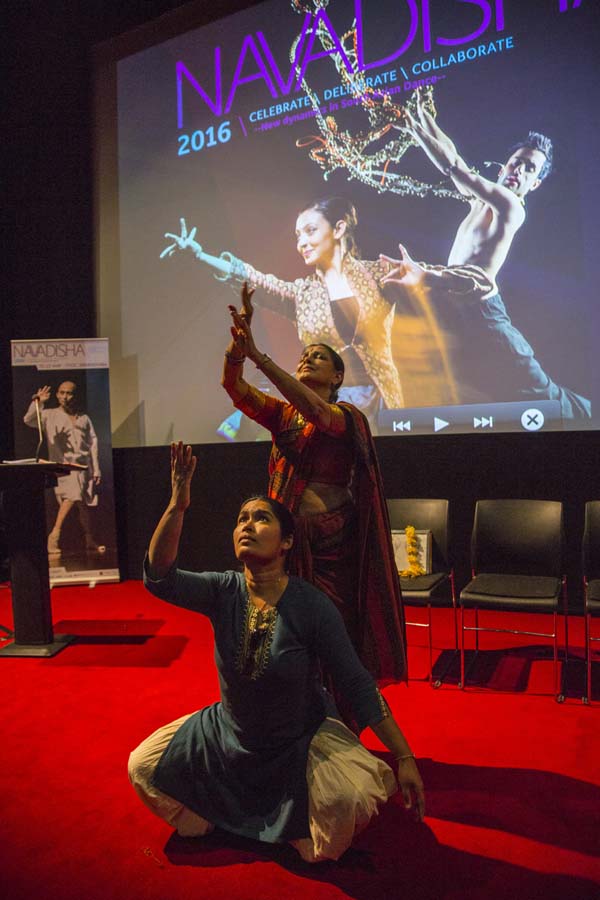
Bharatanatyam dancer, choreographer, musician and teacher PushkalaGopal, whose services to Bharatanatyam in London are far reaching, PratapaPawar, BirjuMaharaj’s traditionally accepted in his Gharana, gandabandh disciple, a pioneer teacher to settle down in London and training a generation of dancers in Kathak and giving to the dance world a gem, what he called Kohinoor diamond in Akram Khan, and the legendary Kathak dancer NahidSiddiqui from Pakistan, settling in Birmingham and also training a generation of dancers, were honoured by the Navadisha conference in a heart-warming ceremony. I was given the privilege of handing over the awards to these stalwarts.
Each session had an inaugural dance presentation. On the opening day, a specially commissioned duet between Winner BBC Young Dancer of the year 2015 Connor Scott and Vidya Patel Category winner and Grand Finalist BBC Young Dancer of The Year 2015 was excellent. The Showcase included works by UK-based performers and choreographers; among themArunima Kumar’s Kuchipudi on one of the three women Sati was commendable for contemporary interpretation and empowerment of women. If I am not mistaken, this was the first ever contemporary work I have seen in Kuchipudi. Many years ago I had seen AvanthiMeduri’s extension of Matsyavatara in a contemporary vein. Others were Kali Chandrasegaram, KamlaDevam, KeshaRaitha and work of Urja Desai Thakore.
There was also a yoga session, dance performances by YuvaGati students from National South Asian dance strand of the Centre for Advanced Dance Training (CADT). What was titled Mini-misrana included showcase by young ISTD students from around England.
For such a marathon conference it would have been wonderful to have its coverage in the mainstream English and vernacular Indian language newspapers. I was told that arrangements were made for ‘streaming’ the sessions. I am sure the media persons in charge for the conference must have tried but should have ensured that the British press drew the attention of public to such a historic conference.
I also do not know why the critics were conspicuous by their absence. There was not a single session on the role of media, appreciation, evaluation, reviews, and criticism of South Asian dance. Since tremendous thinking and planning had gone behind conceiving such a mega conference, it would have helped to listen to the contributors’ views on these topics.
All said and done, the organisers deserve praise for organising the conference, which enlightened all on the development, richness and progress of South Asian dance in the UK in the past 40 years. The brochure published for the conference with photographs, layout and design by ace designer and photographer Vipul Sango is indeed a collector’s item and a precious document. The photographs taken by him would form a precious and historic document to be maintained in a photo archive.
It would be excellent, funds permitting, to bring out a publication of the keynote addresses, speeches and reporting in the form of a book.
Photograph Captions
Photo Credits: VipulSangoi
6050: Panel discussion with emerging stars – Amina Khayyam, Sonia Sabri, Shane Shambhu, Sita Patel and AkashOdedra
6536: Scott Connor, winner of BBC young dancer 2016 with Vidya Patel, runner up. Performing their new duet.
7233: HonouringPushkalaGopal, PrathapPawar and NahidSiddiqui. Presented by Dr. Sunil Kothari
7480: Session on International Collaboration and making connections
7652: MavinKhoo presenting day 3 keynote
7704: Nina Rajarani and Yadavan presenting their new work
7740: ShantaRao and ChamuKuppuswamy’s homage to the soldiers from India who fought in world war 1

